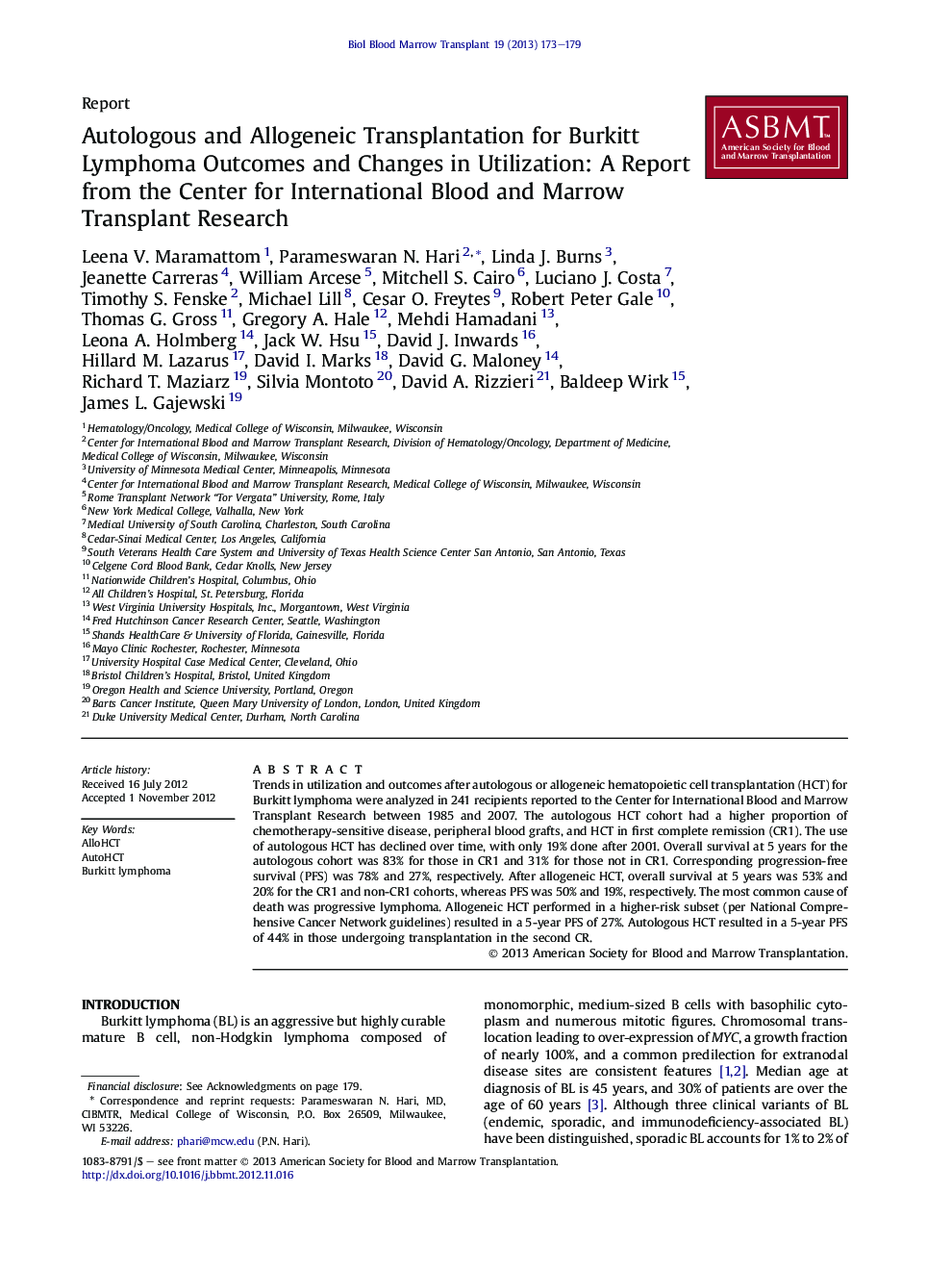| کد مقاله | کد نشریه | سال انتشار | مقاله انگلیسی | نسخه تمام متن |
|---|---|---|---|---|
| 2103120 | 1546296 | 2013 | 7 صفحه PDF | دانلود رایگان |

Trends in utilization and outcomes after autologous or allogeneic hematopoietic cell transplantation (HCT) for Burkitt lymphoma were analyzed in 241 recipients reported to the Center for International Blood and Marrow Transplant Research between 1985 and 2007. The autologous HCT cohort had a higher proportion of chemotherapy-sensitive disease, peripheral blood grafts, and HCT in first complete remission (CR1). The use of autologous HCT has declined over time, with only 19% done after 2001. Overall survival at 5 years for the autologous cohort was 83% for those in CR1 and 31% for those not in CR1. Corresponding progression-free survival (PFS) was 78% and 27%, respectively. After allogeneic HCT, overall survival at 5 years was 53% and 20% for the CR1 and non-CR1 cohorts, whereas PFS was 50% and 19%, respectively. The most common cause of death was progressive lymphoma. Allogeneic HCT performed in a higher-risk subset (per National Comprehensive Cancer Network guidelines) resulted in a 5-year PFS of 27%. Autologous HCT resulted in a 5-year PFS of 44% in those undergoing transplantation in the second CR.
Journal: - Volume 19, Issue 2, February 2013, Pages 173–179